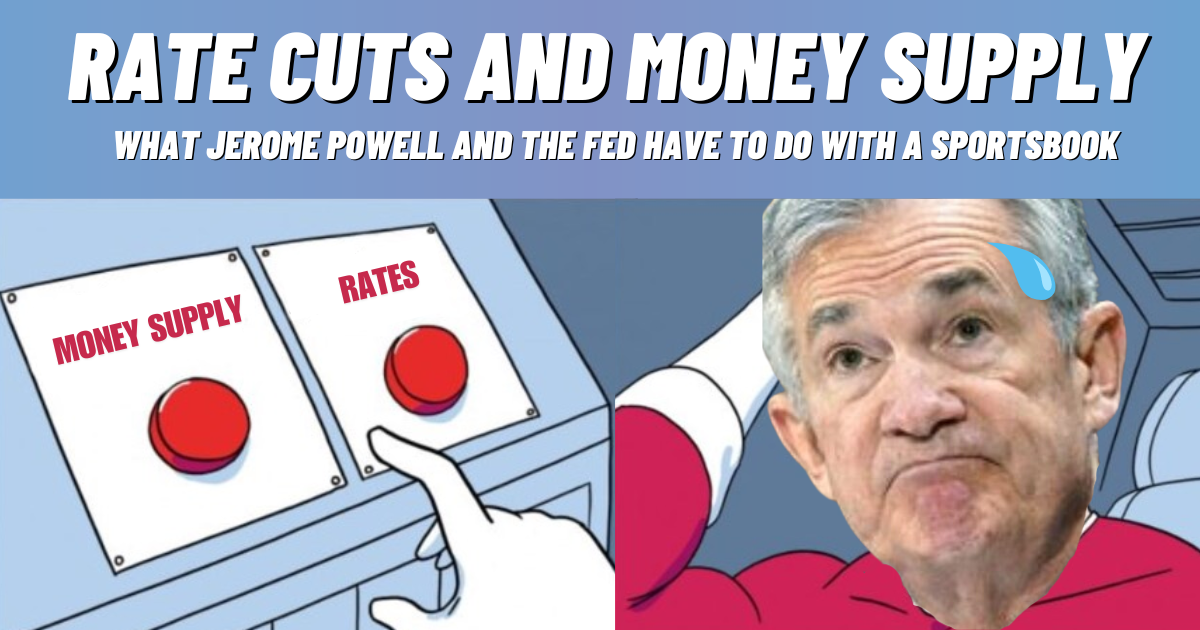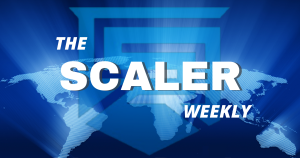What Jerome Powell and the FED have to do with a Sportsbook…
Since his press conference from Jackson Hole earlier this month, Jerome Powell, the Federal Reserve (FED), and potential rate cuts are top of mind for seemingly everyone. So, let’s look at how an economy/markets can be affected.
Most people assume supply and demand dictate how markets operate and generally that is true but what many may not understand is the influence that is exerted through market makers and levers that can be pulled with Monetary Policy.
In a later edition there will be a deeper dive into market makers but for sake of simplicity, the focus here will be on Monetary Policy which is the use of rates and money supply. Put simply, rates are the cost of potential money and money supply is the amount of money accessible.
The goal is balance, since risks exist on both sides of the extremes – excessive supply or excessive demand.

And, the FED is largely in charge of making these decisions: raise or lower rates, start printing or restricting money, etc. So are two levers of adjustment better than one? If the goal is ability to affect, then yes, more is better. Always.
Which leads to the link between Monetary Policy and a sportsbook.
Anyone who sports bets, casually or more seriously, understands what odds are. They are the cost of potential money. To illustrate:
- At -110, a bettor would risk $110 to win $100
- At +120, a bettor would risk $100 to win $120
Simple enough right? The risk reward tradeoff is reflected in these numbers. There is an inverse relationship between odds and likelihood of the bettor winning (i.e. all things being equal, +900 is a less likely outcome than +100).
But, let’s shift the focus to the sportsbook because similar to what we outlined above as the FED’s goal, a sportsbook’s goal is also balance because of risks on the extremes.
How much money is on each side of the bet (Team A vs. Team B) is called the betting split. If that is a new term, it may surprise you to know how important this term is to a sportsbook.
In the sportsbook’s case it is most advantageous to have 50% of the money on either side of a bet, in the long run. This guarantees a return to the sportsbook because of the odds (or rates). Having a lopsided bet that is unable to be offloaded, presents significant risk exposure.
So, a sportsbook can adjust the odds (or line) to entice consumers (i.e. cheaper or more expensive cost for potential money). This is the prevailing sentiment, a sportsbook can and does move the odds or line to impact the betting split. Is the inverse true – can money supply changes affect the odds (or rates)? Oh, yeah.
Similar to the FED the sportsbook has another lever at its disposal – money supply. As discussed above, more options is better.
With or without an adjustment to the odds/lines the sportsbook can bring in consumers and their dollars through content, promotion or other access points to whichever side of the bet needs money. The news reported, the injury rumors, the headlines, etc. can all be used as tools. Important to note these are tools not strictly defined as regulated advertising.
Like the FED, a sportsbook can affect a market by two main levers: rate/odds/line AND money supply. And they, in conjunction with the contracted third party risk management platforms, are very good at it.
Sports betting is a low margin business but it is relatively consistent in the long term. The ability for sportsbooks to take risk technology in-house either organically or inorganically, offensively or defensively will be closely monitored by Wall Street analysts. Which is another topic for another day.
So, for now, keep an eye on September and beyond because it seems both football and rate cuts are here.
More from SharpRank…
Click here to read this week’s SCALER.



